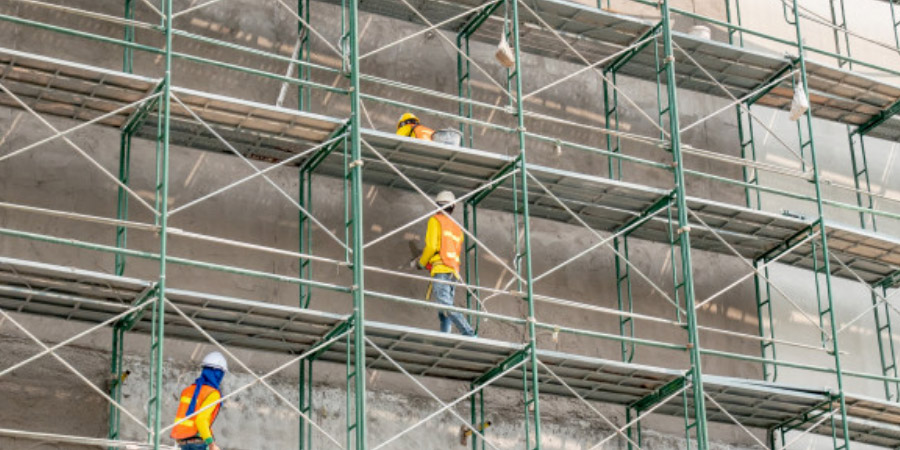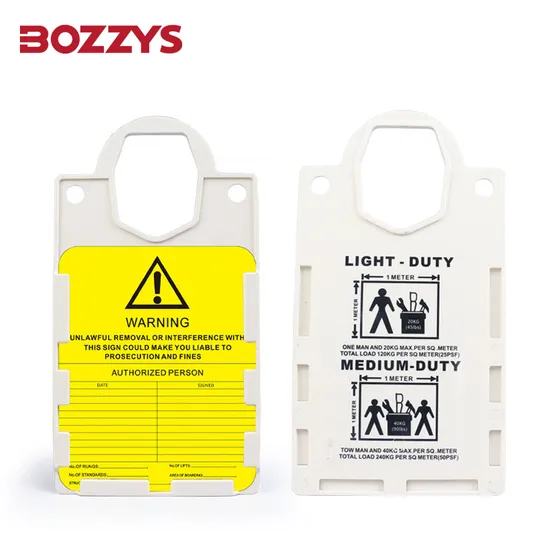Scaffolding is vital in construction. It provides support and safety for workers.
In Saudi Arabia, the construction industry is booming. New projects arise every day, and scaffolds play a key role in these developments. Scaffolds are temporary structures used to support workers and materials. They ensure safety and efficiency on construction sites.
In this blog, we will explore the three main types of scaffolds used in Saudi Arabia. Understanding these types helps in choosing the right scaffold for different projects. This knowledge is crucial for construction safety and success. Let’s dive into the details and learn more about these essential structures.

Credit: www.alibaba.com
Introduction To Scaffolds
Scaffolding plays a crucial role in the construction industry. It provides temporary support for workers and materials. In Saudi Arabia, scaffolding is essential for ensuring safety and efficiency on construction sites. Understanding the different types of scaffolds is important for project success.
Importance Of Scaffolding In Construction
Scaffolding ensures the safety of workers at elevated heights. It provides a stable platform for performing tasks. Without scaffolding, many construction activities would be risky. It also helps in maintaining work quality. Workers can access hard-to-reach areas easily. This leads to better craftsmanship and fewer errors.
Regulations In Saudi Arabia
Saudi Arabia has strict regulations for scaffolding. These regulations ensure the safety of workers and the public. They cover the design, construction, and maintenance of scaffolds. Compliance with these rules is mandatory. Regular inspections are also required to ensure safety. Following these regulations prevents accidents and legal issues.
Suspended Scaffolds
Suspended scaffolds are a common sight in construction projects in Saudi Arabia. They hang from the top of a structure using ropes or other flexible materials. These scaffolds are ideal for working at great heights. They provide easy access to hard-to-reach areas.
Overview And Uses
Suspended scaffolds are platforms supported by ropes or cables. Workers can raise or lower them as needed. They are often used for tasks like painting, window cleaning, and exterior repairs. These scaffolds are versatile and can adapt to different building shapes and sizes.
Safety Measures
Safety is crucial when using suspended scaffolds. Workers must wear harnesses and attach them to secure anchor points. Regular inspections ensure the scaffold’s integrity. Proper training is necessary to operate these platforms safely. Always check ropes and cables for wear and tear.
Common Applications
Suspended scaffolds are common in high-rise building maintenance. They are used for window cleaning on tall structures. They also help in facade repairs and painting. Construction projects with complex architecture benefit from their flexibility.
Supported Scaffolds
Supported scaffolds are the most common type used in Saudi Arabia. They consist of one or more platforms held up by rigid supports, such as poles or frames. These scaffolds are widely used in construction and maintenance work.
Overview And Uses
Supported scaffolds provide a safe and stable platform for workers. They are easy to set up and can be adjusted to different heights. This makes them ideal for various tasks. Supported scaffolds are often used in building construction, repairs, and painting jobs. Their versatility makes them a popular choice in many industries.
Safety Measures
Ensuring safety while using supported scaffolds is crucial. Here are some key safety measures:
- Always inspect the scaffold before use.
- Ensure all components are in good condition.
- Use guardrails and toe boards to prevent falls.
- Do not overload the scaffold with tools or materials.
- Provide proper training to workers on scaffold safety.
Common Applications
Supported scaffolds are versatile and can be used in many applications:
| Application | Description |
|---|---|
| Building Construction | Used for bricklaying, plastering, and other tasks. |
| Maintenance Work | Ideal for repairing and maintaining structures. |
| Painting | Provides a stable platform for painters. |
| Window Cleaning | Used to clean high-rise building windows. |

Credit: www.linkedin.com
Mobile Scaffolds
In Saudi Arabia, mobile scaffolds are crucial for construction and maintenance work. These scaffolds are versatile and provide a safe working platform. They are easy to move and adjust, making them ideal for various tasks.
Overview And Uses
Mobile scaffolds are temporary structures used to support workers and materials. They are designed with wheels for easy movement. This type of scaffold is often used in projects that require frequent changes in position.
Common uses include painting, electrical work, and building maintenance. Workers can move the scaffold to different locations without disassembling it. This saves time and increases productivity.
Safety Measures
Ensuring safety while using mobile scaffolds is critical. Here are key safety measures:
- Always lock the wheels when the scaffold is in use.
- Ensure the ground is level and stable before setting up.
- Do not overload the scaffold with materials or equipment.
- Use guardrails and toe boards to prevent falls.
- Inspect the scaffold regularly for any damages.
Following these safety measures helps prevent accidents and injuries. Proper training for workers is also essential for safe scaffold use.
Common Applications
Mobile scaffolds are widely used in various industries in Saudi Arabia. Here are some common applications:
- Construction Sites: For tasks like bricklaying, plastering, and installing windows.
- Maintenance Work: Used in repairing roofs, cleaning buildings, and fixing signage.
- Event Setup: Ideal for setting up stages, lighting, and sound systems.
These applications demonstrate the versatility and practicality of mobile scaffolds. They are an essential tool for many professionals.
Materials Used In Scaffolding
Scaffolding is essential in construction projects across Saudi Arabia. The materials used in scaffolding play a key role in its durability and safety. Different materials offer unique benefits and drawbacks. Let’s explore the types of materials used in scaffolding and what makes each one special.
Types Of Materials
The primary materials for scaffolding are steel, aluminum, and wood. Steel is the most common. It is strong and can support heavy loads. Aluminum is lighter than steel. This makes it easier to transport and assemble. Wood is less common but still used in some projects. It is cheaper but may not be as durable.
Benefits And Drawbacks
Steel scaffolding is very strong. It can hold up under heavy weights. It is also resistant to fire. The downside is its weight. Steel is heavy and can be hard to move. Aluminum is much lighter than steel. It is easy to move and set up. It does not rust, making it good for long-term use. But aluminum is not as strong as steel. It might not support very heavy loads.
Wood scaffolding is cheap and easy to find. Many small projects use wood. But wood is not very durable. It can rot or break. It is also not fire-resistant. This makes it less safe for big projects.
Safety Standards
In Saudi Arabia, safety standards for scaffolding are of utmost importance. Ensuring the safety of workers and the public is essential. Scaffolding must meet strict guidelines to prevent accidents and injuries.
Inspection Requirements
Regular inspections are crucial for scaffold safety. Inspections must be conducted by qualified personnel. These inspections help identify potential hazards. They ensure that the scaffold is stable and secure. Any defects found must be addressed immediately.
Worker Training
Proper training is essential for workers using scaffolds. Workers must know how to assemble and disassemble scaffolds. They should understand the safety protocols to follow. Training includes recognizing potential risks and how to avoid them. Well-trained workers contribute to a safer working environment.
Choosing The Right Scaffold
Choosing the right scaffold is crucial for the success of your project. The scaffold provides a safe and stable platform for workers. It ensures that tasks are completed efficiently and without hazards. There are three main types of scaffolds used in Saudi Arabia: supported scaffolds, suspended scaffolds, and rolling scaffolds. Each type serves different purposes and has its own advantages.
Factors To Consider
Several factors influence the selection of the right scaffold. First, consider the height of the structure. Different scaffolds are suited for different heights. Secondly, think about the weight the scaffold needs to support. This includes workers, tools, and materials. Safety is also a key factor. The scaffold must meet safety standards and be regularly inspected.
Project Requirements
Project requirements play a major role in selecting the appropriate scaffold. For instance, supported scaffolds are ideal for most construction projects. They are easy to assemble and provide a stable platform. Suspended scaffolds are perfect for high-rise buildings. They allow workers to move up and down with ease. Rolling scaffolds are best for projects that require mobility. They can be easily moved around the site.

Credit: www.sparsteel.com
Future Of Scaffolding
The future of scaffolding in Saudi Arabia is becoming more innovative and sustainable. Construction projects are growing, and the demand for safer and more efficient scaffolding systems is high. Let’s explore the advancements in technology and sustainability trends shaping this future.
Technological Advancements
Technology is changing scaffolding systems. New materials and designs make scaffolds safer and stronger. For example, modular scaffolds are easy to assemble and adjust. This saves time and reduces labor costs.
Another advancement is the use of 3D modeling. This helps in planning and designing scaffolds before actual construction. It reduces errors and improves safety. Drones are also used for inspection, ensuring that scaffolds are in good condition.
Sustainability Trends
Saudi Arabia is adopting green construction practices. This includes sustainable scaffolding materials. Using recyclable materials like aluminum is becoming common. Aluminum is light and strong, making it a good choice for scaffolding.
Another trend is reducing waste. Companies are reusing and recycling scaffolding parts. This not only saves money but also protects the environment. The focus is on creating eco-friendly scaffolding solutions for future projects.
Frequently Asked Questions
What Are The Types Of Scaffolds In Saudi Arabia?
There are three main types of scaffolds in Saudi Arabia: supported scaffolds, suspended scaffolds, and rolling scaffolds.
What Is A Supported Scaffold?
A supported scaffold is built from the ground up with vertical and horizontal structures. It is the most common type used.
What Is A Suspended Scaffold?
A suspended scaffold hangs from ropes or chains attached to the building. It is typically used for window washing.
What Is A Rolling Scaffold?
A rolling scaffold is a mobile scaffold with wheels. It allows easy movement and is ideal for tasks requiring repositioning.
Conclusion
Understanding the three types of scaffolds in Saudi Arabia is essential. Each type serves specific construction needs. Choose the right scaffold for safety and efficiency. This decision impacts project success. Always consult professionals for proper scaffold use. Investing in the right equipment ensures worker safety.
It also enhances productivity on site. Proper knowledge leads to informed decisions. Safety and efficiency are key in construction. Scaffold types cater to diverse project requirements. Make the right choice for a successful build. Ensure safety and efficiency with the right scaffold.

